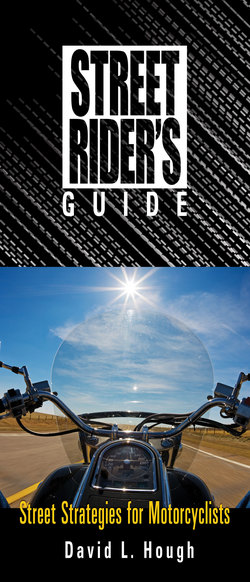Читать книгу Street Rider's Guide - David L. Hough - Страница 14
ОглавлениеCountersteering
Steering the handlebars makes it lean.
You just got into motorcycling a couple of months ago. Now that you have a motorcycle license, you’re eager to get out and ride, although it’s still pretty scary. Sometimes the bike seems to have a mind of its own.
You feel a lot safer on slower state highways than on the freeways. You drop down into a valley and realize there’s a very narrow concrete bridge ahead. Luckily, there’s not a big truck coming, but it still looks awfully narrow. You can’t keep your eyes off that steel guardrail where it wraps around the concrete. You press your right knee against the tank to urge the bike to lean more toward the left, but it doesn’t budge. It just keeps heading toward the guardrail. Finally, you panic and jam on the rear brake to get the bike slowed, just before it bangs into the rusty steel. Your leg is scraped between the bike and the rail, but it doesn’t feel broken.
As it happens, we subconsciously steer the bike where we are looking. Staring at the guardrail probably caused you to steer toward it. So, rather than staring at the guardrail, you should have focused on the center of your lane a hundred feet beyond the bridge and ignored the guardrail.
It’s very important to understand how to make a two-wheeler turn. To turn, first you have to get the bike leaned. After the bike is leaned, you can steer it. The leaning part is called countersteering because you momentarily steer opposite or counter to the way you want the bike to go. For instance, to steer the bike more toward the left, you lean it to the left by momentarily pressing on the left handlebar grip. Press left to lean left. Press right to lean right. If this is news to you, it would be wise to spend some time practicing countersteering away from traffic, to get it figured out. By the way, your braking technique needs a little work, too.
